Create a cluster on VMware vSphere 6.7 to benefit from high availability (HA), vSphere DRS, ...
- VMware
- VMware vCenter Server (VCSA), VMware vSphere
- 14 February 2025 at 15:40 UTC
-

- 2/2
5. Migrate the VCSA VM to your cluster
Since you cannot add a host to a cluster without putting it in maintenance mode and you need your VCSA VM to use the VMware vSphere Client.
To fix this issue, simply migrate the VCSA VM to the host you have already added to your cluster.
To do this, select your "VCSA" VM and click: Actions -> Migrate.
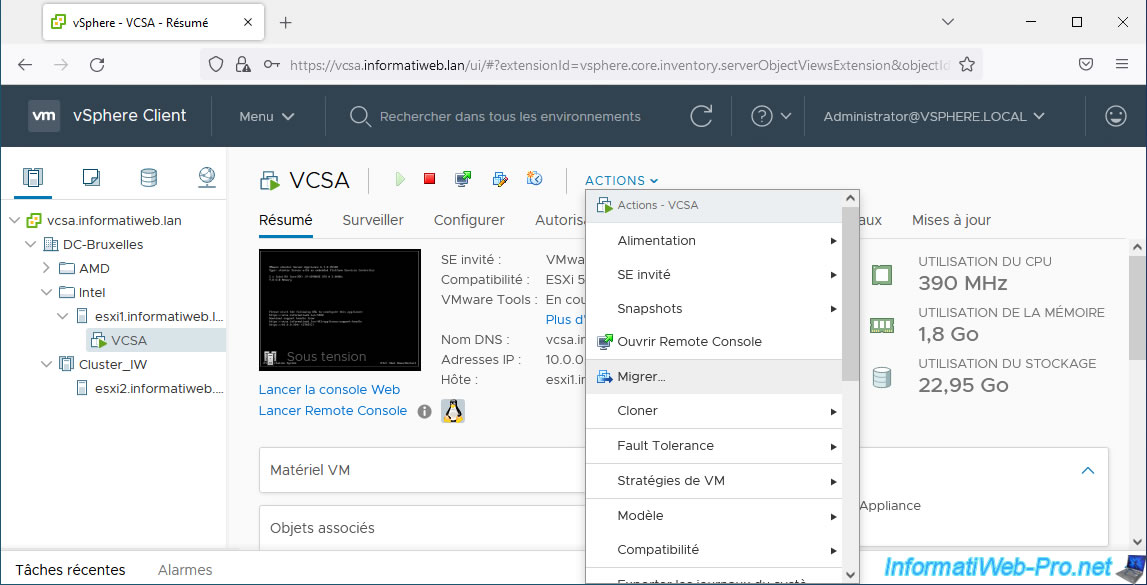
In the "VCSA - Migrate" wizard that appears, select "Change both compute resource and storage".
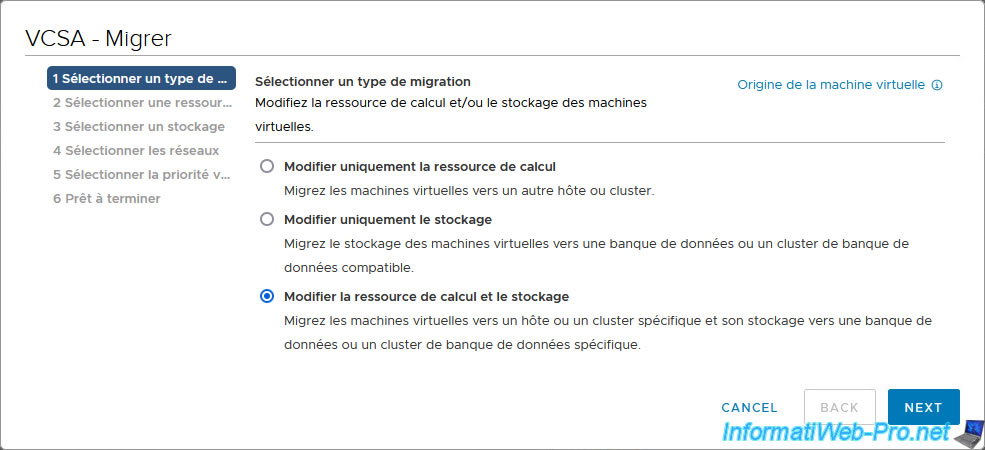
Select a host that is already part of your VMware vSphere cluster.
Note: vMotion must be enabled on at least one VMkernel interface on your host for migration to be possible.
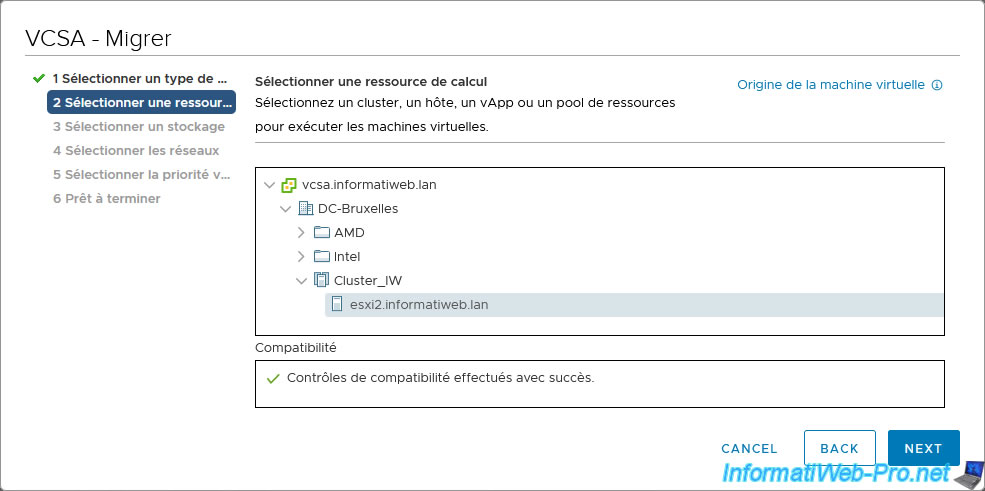
Select an iSCSI datastore (or shared storage accessible by the different hosts that will be part of your cluster).
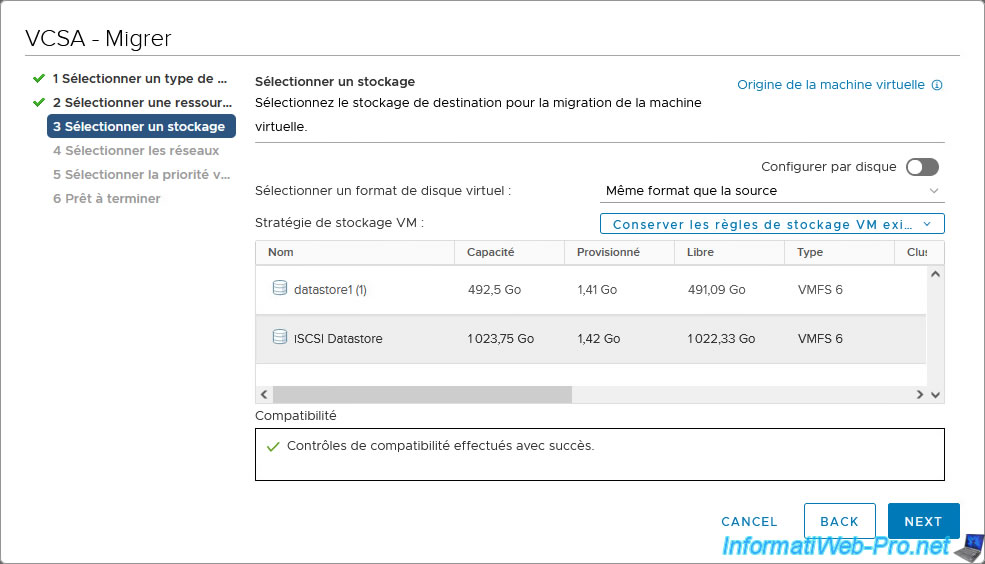
Select the destination virtual network.
In our case: VM Network.
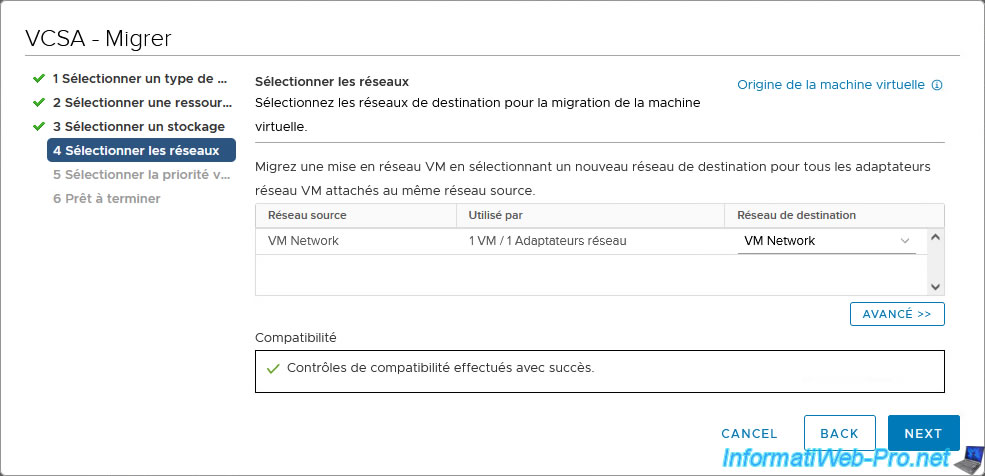
The priority does not matter if there are no other VM migrations in progress.
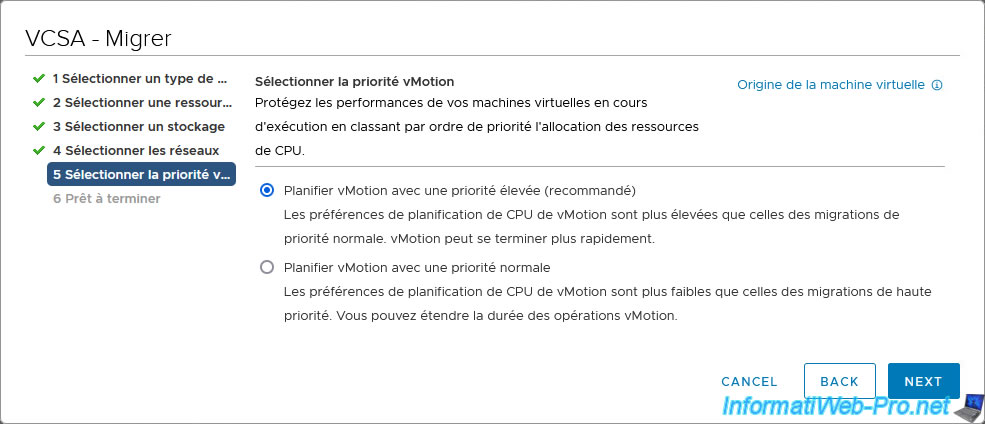
A summary is displayed.
Click Finish.
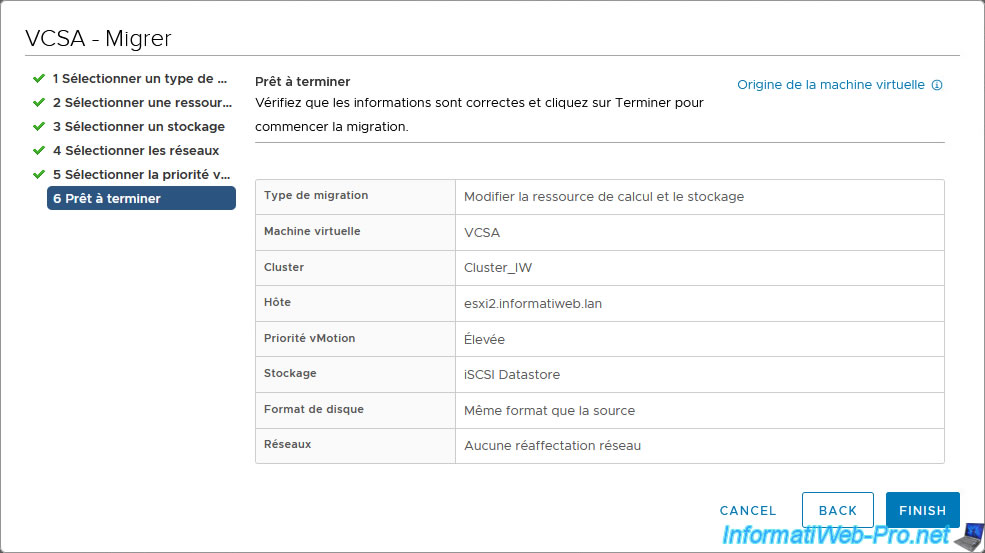
Wait while your "VCSA" VM is migrated.
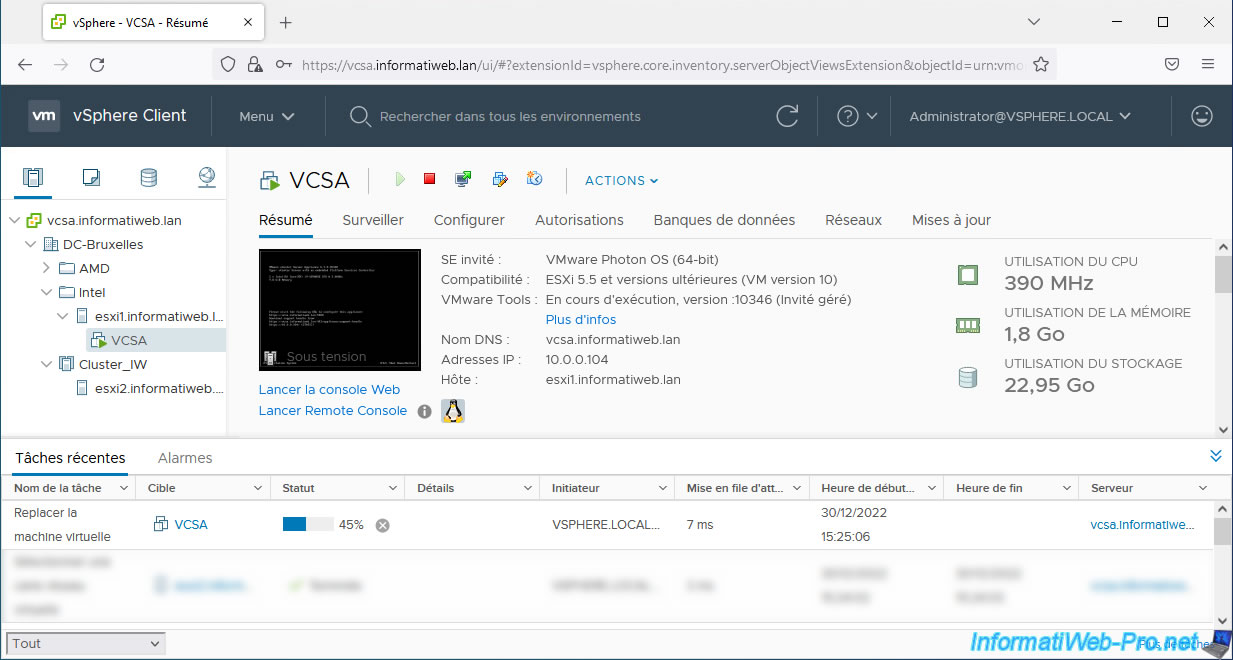
Your "VCSA" VM has been migrated to a host in your cluster.
In our case, our host "esxi1" is now free.
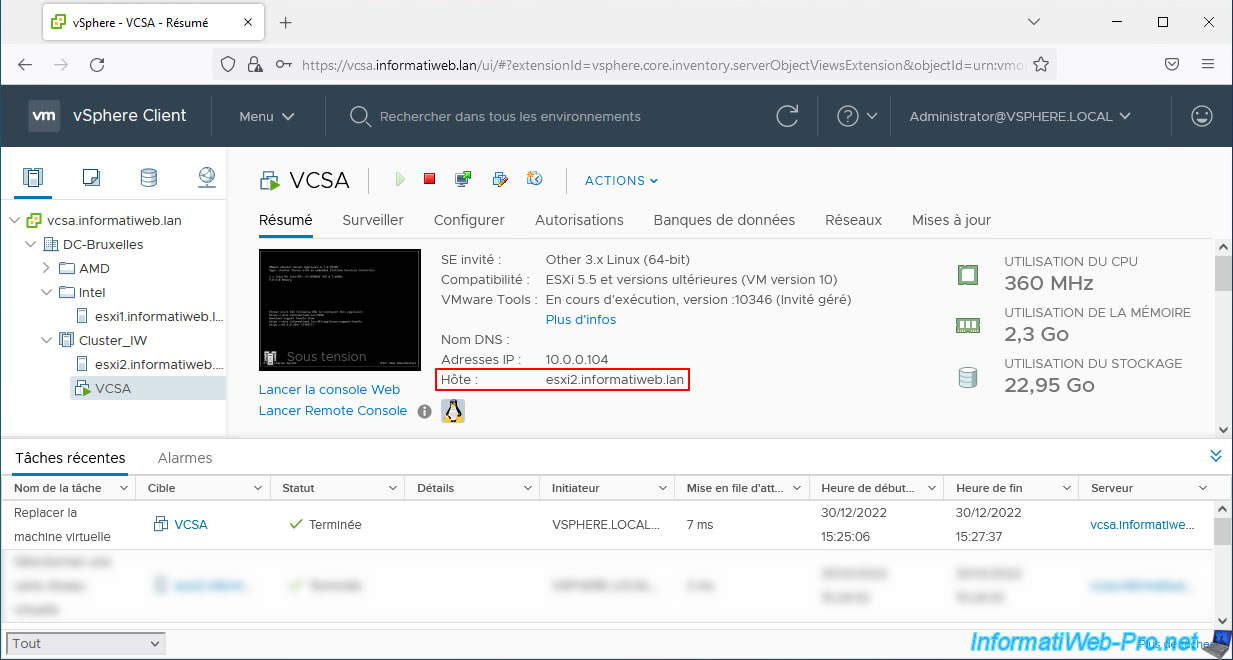
6. Add another host to the cluster
Now that our host "esxi1" no longer has any virtual machines powered on, we can add it to our cluster.
To do this, we can also drag/drop it onto our cluster.
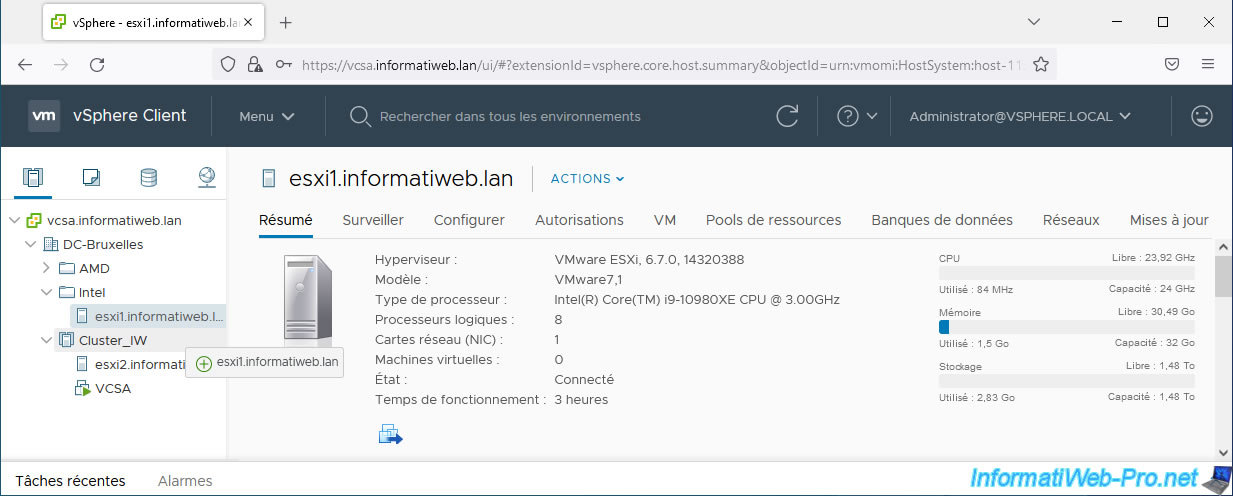
As expected, our host is added to our cluster.
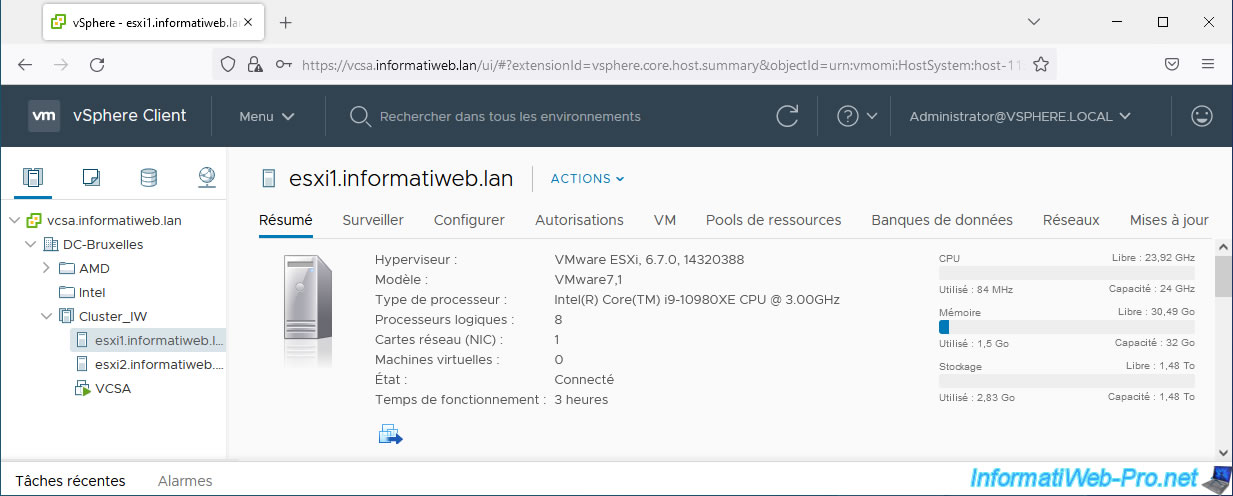
7. Create a virtual machine on your VMware vSphere cluster
To create a new virtual machine on your VMware vSphere cluster, select your cluster and click: Actions -> New Virtual Machine.
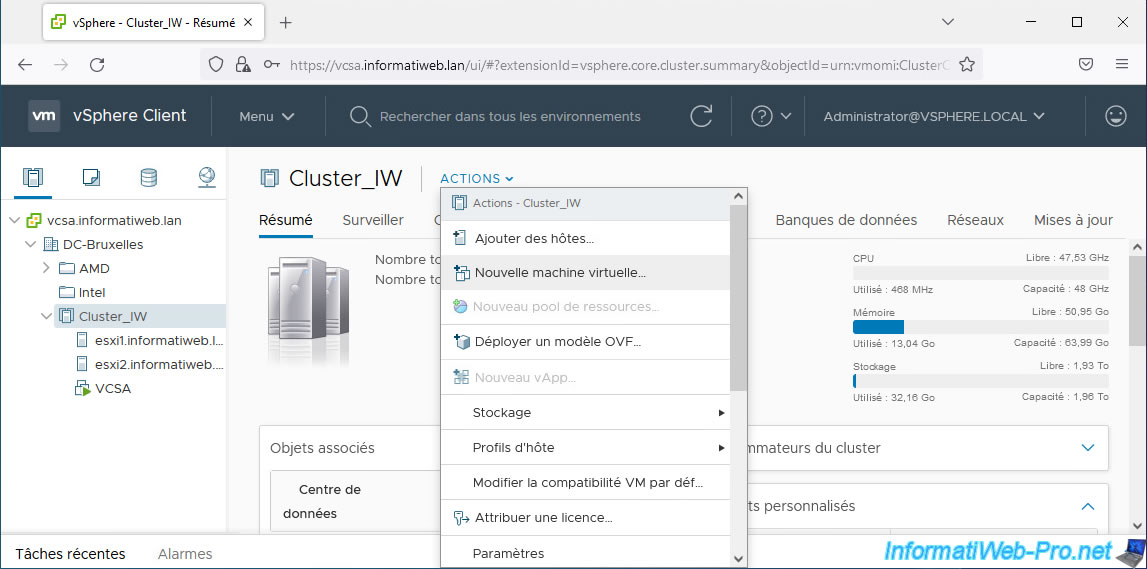
Select: Create a new virtual machine.
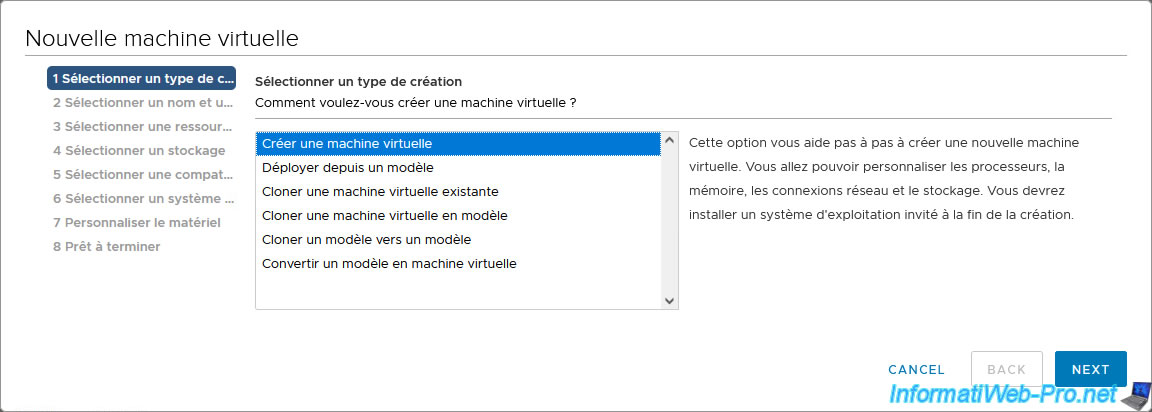
Specify a name for this virtual machine.

Select a member host of your VMware vSphere cluster.
Note: if you enable DRS in the future on your VMware vSphere cluster, you will have the option to select your cluster below and DRS will take care of selecting the most suitable host for your new virtual machine.
However, this is not possible at the moment, since DRS is not enabled on it at the moment.
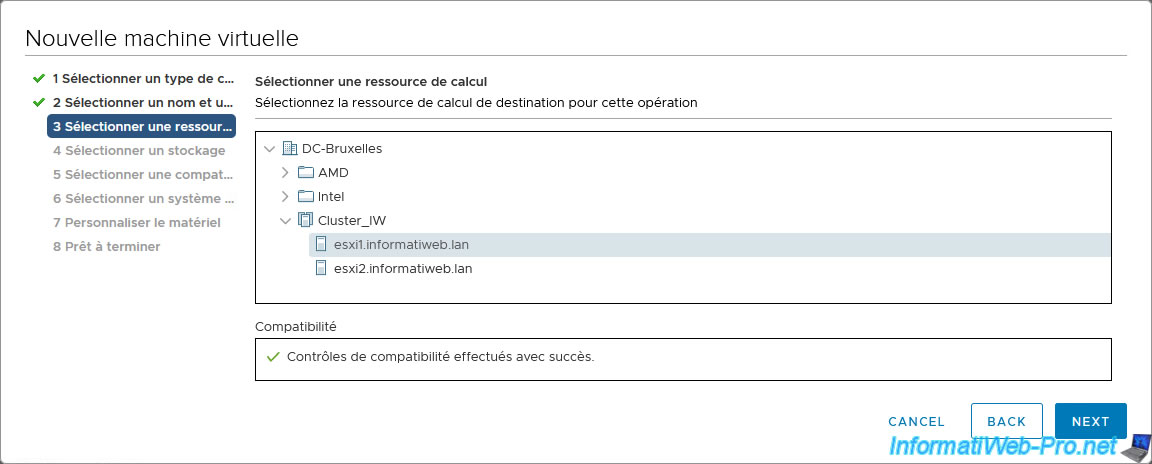
Preferably, select a datastore accessible by all the hosts in your cluster so that the migration of VMs from one host to another in the cluster is much faster and to be able to restart the VM automatically using vSphere HA if the current host crashes.
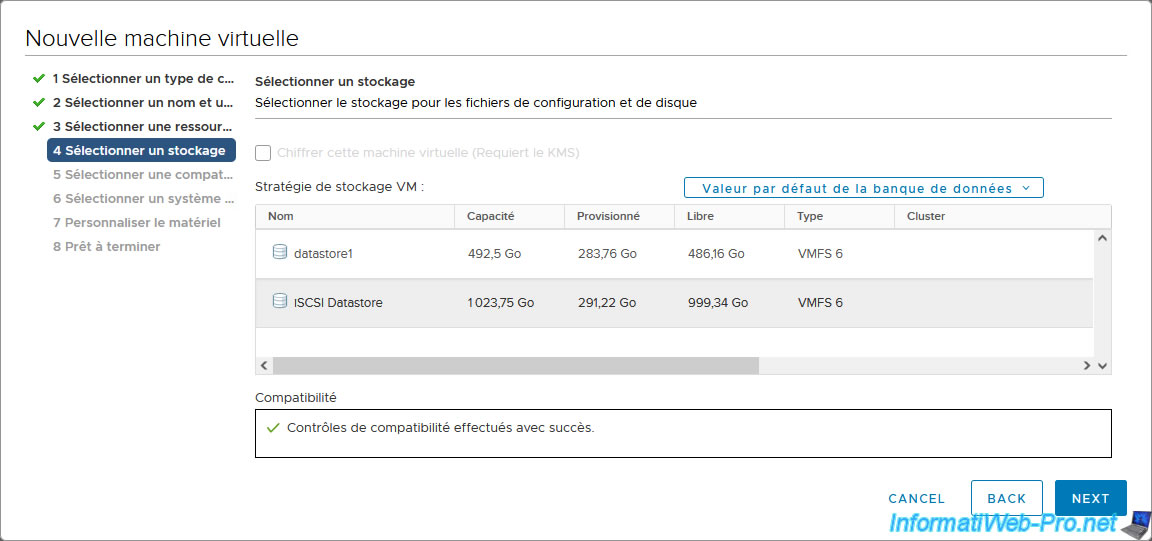
Leave the default compatibility level.

Select the desired guest operating system.
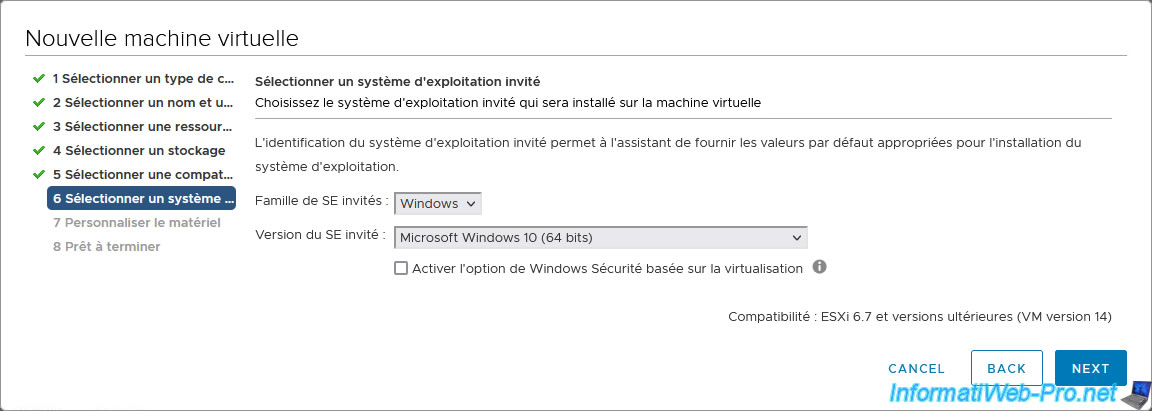
No special thing for virtual hardware. However, if you add additional virtual hard disks, make sure to store them with the VM so that they also end up on the previously selected datastore.
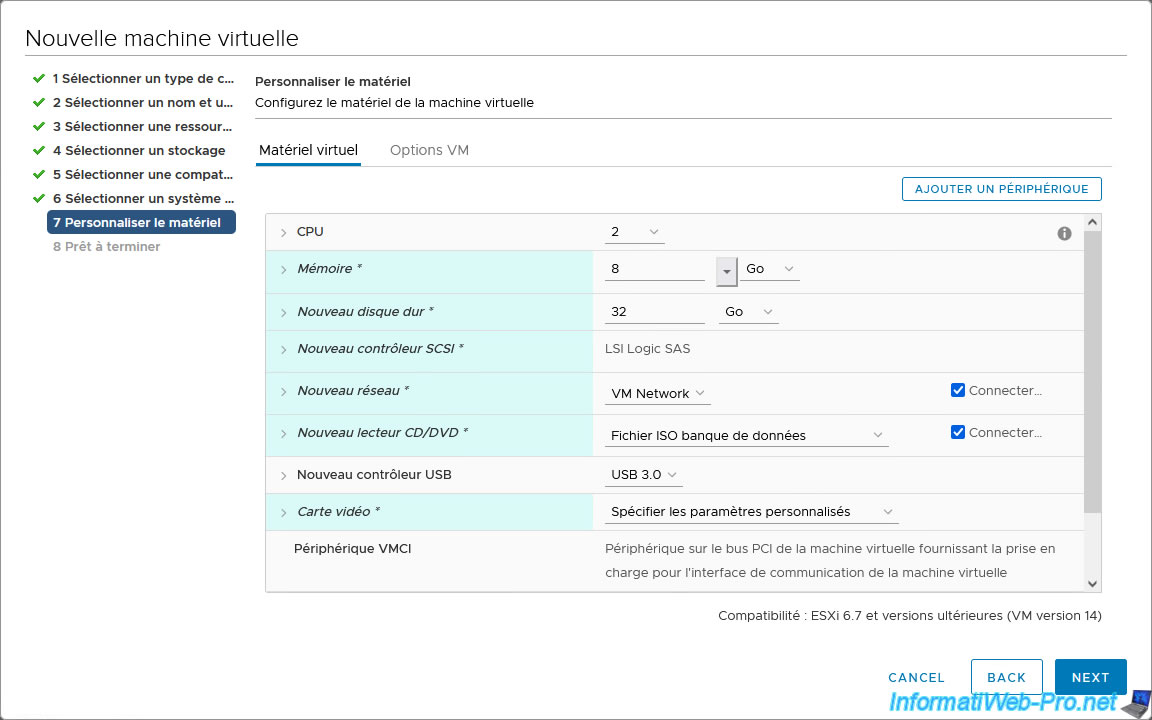
A summary of the configuration of the new virtual machine appears.
Click Finish.
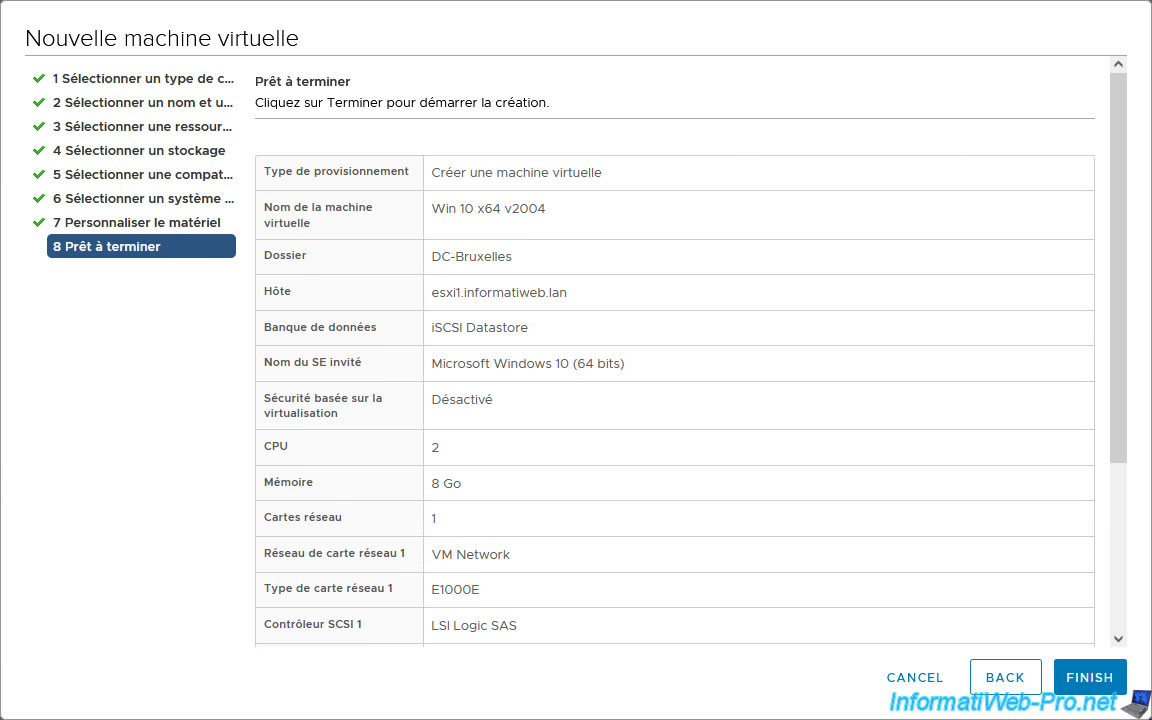
Your new virtual machine has been created on your iSCSI datastore.
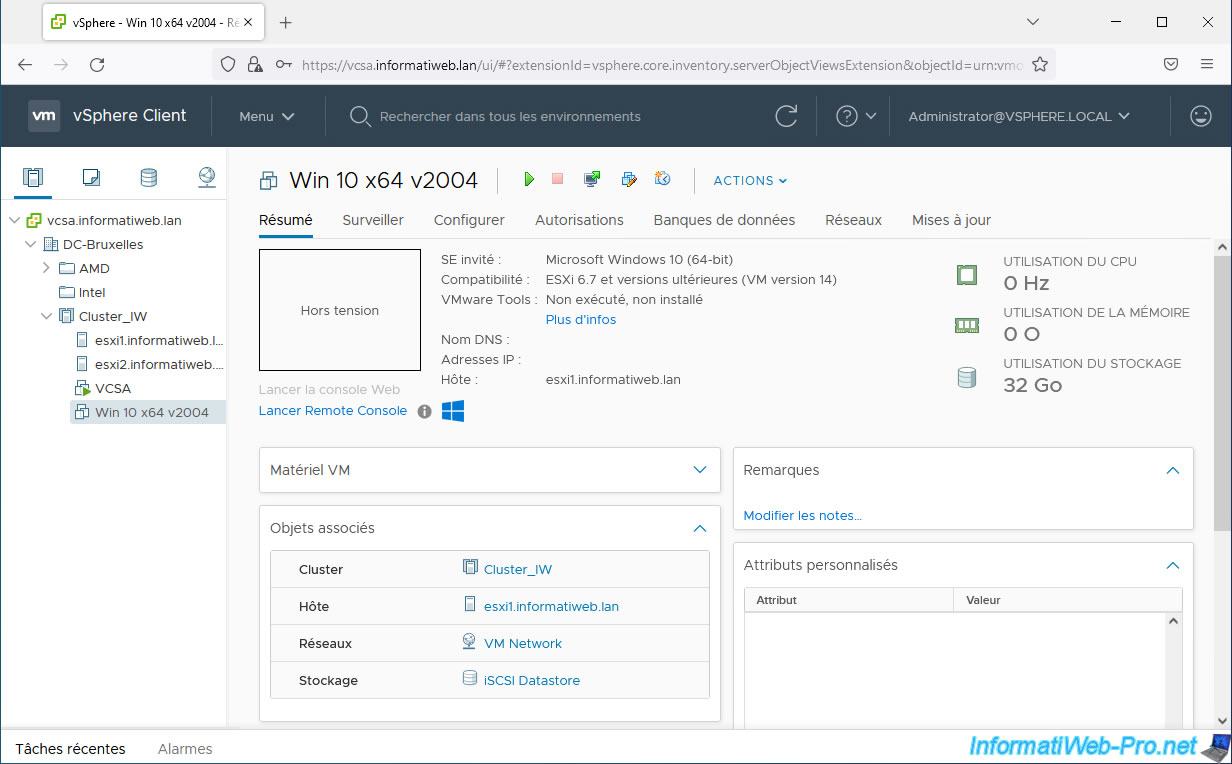
Share this tutorial
To see also
-
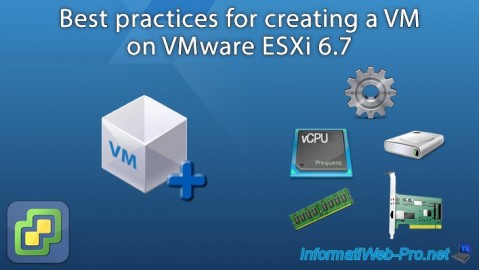
VMware 4/14/2023
VMware ESXi 6.7 - Best practices for creating a VM
-
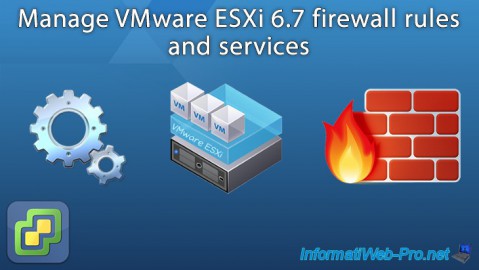
VMware 11/2/2022
VMware ESXi 6.7 - Manage services and firewall
-
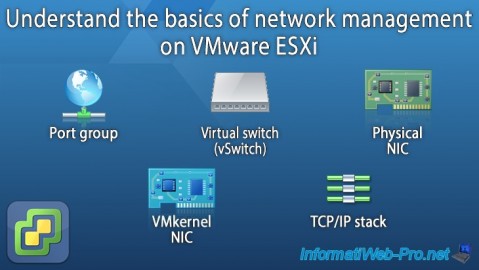
VMware 8/17/2022
VMware ESXi 7.0 / 6.7 - Basics of network management on VMware ESXi
-
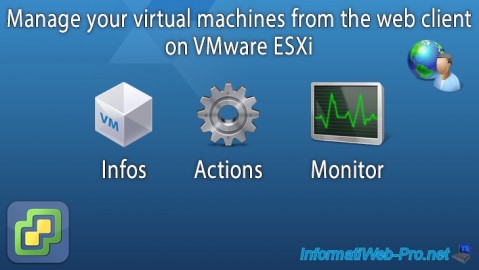
VMware 9/9/2022
VMware ESXi 7.0 / 6.7 - Manage your VMs from the web client

No comment